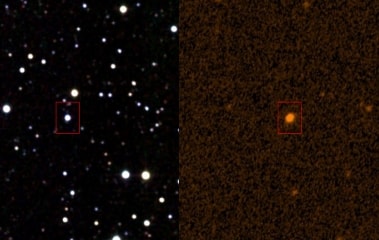
Unusual dips in brightness shown by the mysterious Tabby’s Star may be caused by an uneven dust cloud moving around the star, say scientists.
This is debunking an imaginative theory that blames a “megastructure” built by an advanced alien civilisation for the phenomenon.
Called KIC 8462852, also known as Boyajian’s Star, or Tabby’s Star, the object has experienced unusual dips in brightness — NASA’s Kepler space telescope even observed dimming of up to 20% over a matter of days.
The star has had much subtler but longer-term enigmatic dimming trends, with one continuing today.
None of this behaviour is expected for normal stars slightly more massive than the Sun.
Speculations have included the idea that the star swallowed a planet that it is unstable, and a theory that a giant contraption built by an advanced civilisation could be harvesting energy from the star, causing its brightness to decrease.
Researcher found that the cause of the dimming over long periods is likely an uneven dust cloud moving around the star.
They found less dimming in the infrared light from the star than in its ultraviolet light.
Any object larger than dust particles would dim all wavelengths of light equally when passing in front of Tabby’s Star.
This pretty much rules out the alien megastructure theory, as that could not explain the wavelength-dependent dimming.
Instead, there is a cloud of dust orbiting the star with a roughly 700-day orbital period.
Researchers observed Tabby’s Star in ultraviolet using Swift, and in infrared using Spitzer.
Supplementing the space telescopes, they also observed the star in visible light during the same period using AstroLAB IRIS, a public observatory with a 68 centimetre reflecting telescope located near the Belgian village of Zillebeke.
Based on the strong ultraviolet dip, the researchers determined the blocking particles must be bigger than interstellar dust, small grains that could be located anywhere between Earth and the star.
Such small particles could not remain in orbit around the star because pressure from its starlight would drive them farther into space.
Dust that orbits a star, called circumstellar dust, is not so small it would fly away, but also not big enough to uniformly block light in all wavelengths.